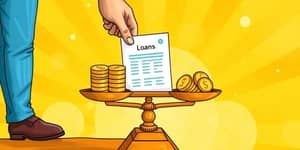
Every day, countless borrowers are tempted by the promise of instant gratification—dream vacations, the latest gadgets, or a stylish wardrobe refresh. Yet these fleeting luxuries can cast a long shadow on your financial future. This article explores why taking on debt for non-essential splurges often backfires and offers actionable advice to keep your finances on track.
By understanding the true cost of borrowing, recognizing the warning signs of lifestyle inflation, and adopting practical budgeting strategies, you can protect your credit health and build sustainable wealth.
Lifestyle inflation occurs when increased income leads to higher spending on non-essentials rather than savings or debt repayment. It often begins innocently—a celebratory dinner after a raise, a weekend getaway, or new tech upgrades.
Over time, these upgrades become the new normal. Suddenly, your budget is stretched thin, and the simple pleasures become mandatory expenses. When the thrill fades, you’re left with recurring loan payments and shrinking disposable income.
While these items may provide temporary status boosts, they rarely offer long-term value—or an increase in net worth.
Personal loans are unsecured debts with fixed monthly payments over 2 to 7 years. Loan amounts can range from $1,000 to $50,000, and many lenders offer funds within one business day of approval.
Lenders evaluate applicants based on four main criteria: credit score, income level, repayment history, and debt-to-income ratio (DTI). Most recommend keeping DTI at or below 50% to avoid overextension. Origination fees—typically 1.85% to 9.99% of the loan amount—add to your overall cost.
The average APR for borrowers with good credit (690–719) sits at 16.48%, meaning a $10,000 loan could accrue over $2,500 in interest over three years. Add fees, and the total cost may be far above retail price.
At first glance, personal loan payments may seem manageable. But fixed monthly obligations can become burdensome when income fluctuates or unexpected expenses arise. Missing a payment can trigger late fees and a hit to your credit score, compounding the financial strain.
Consider this scenario: you borrow $5,000 at 16% APR for a two-year vacation fund. Your monthly payment is roughly $247. Over 24 months, you pay nearly $5,930—nearly $1,000 in interest alone—plus any origination fees. This is debt without long-term gain, leaving you with memories but no asset to show.
Not all personal loans are detrimental. When used wisely, they can be powerful tools:
In these scenarios, you’re increasing or preserving your net worth, improving your living conditions, or safeguarding against financial shocks. The key is ensuring the loan fits comfortably within your budget—even if income dips.
Avoiding debt-driven lifestyle upgrades requires foresight, discipline, and clear goals. Here are concrete strategies:
Before signing any loan agreement, ask yourself:
• Will this purchase enhance my net worth or simply depreciate in value?
• Can I sustain these payments if my income falls by 20%?
• What is the total repayment cost—principal, interest, and fees—over the loan term?
If you crave lifestyle upgrades but want to avoid debt, consider these paths:
Save first: set aside funds in a high-yield savings account until you reach your goal. This removes interest costs and keeps your credit profile intact.
Scale back: opt for less expensive experiences or secondhand items. A road trip can be as memorable as an exotic vacation, at a fraction of the cost.
Trade services: swap skills with friends or family. A homemade celebration can hold more sentimental value than a lavish event financed by debt.
Chasing temporary comforts with long-term debt is a recipe for financial imbalance. By comprehending the full cost of personal loans, recognizing the pitfalls of lifestyle inflation, and adopting disciplined spending habits, you can achieve meaningful growth without burdening your future finances.
Your journey toward financial resilience begins with informed choices and a commitment to sustainability. Embrace these principles, and you’ll transform short-lived indulgences into enduring stability and peace of mind.
References













